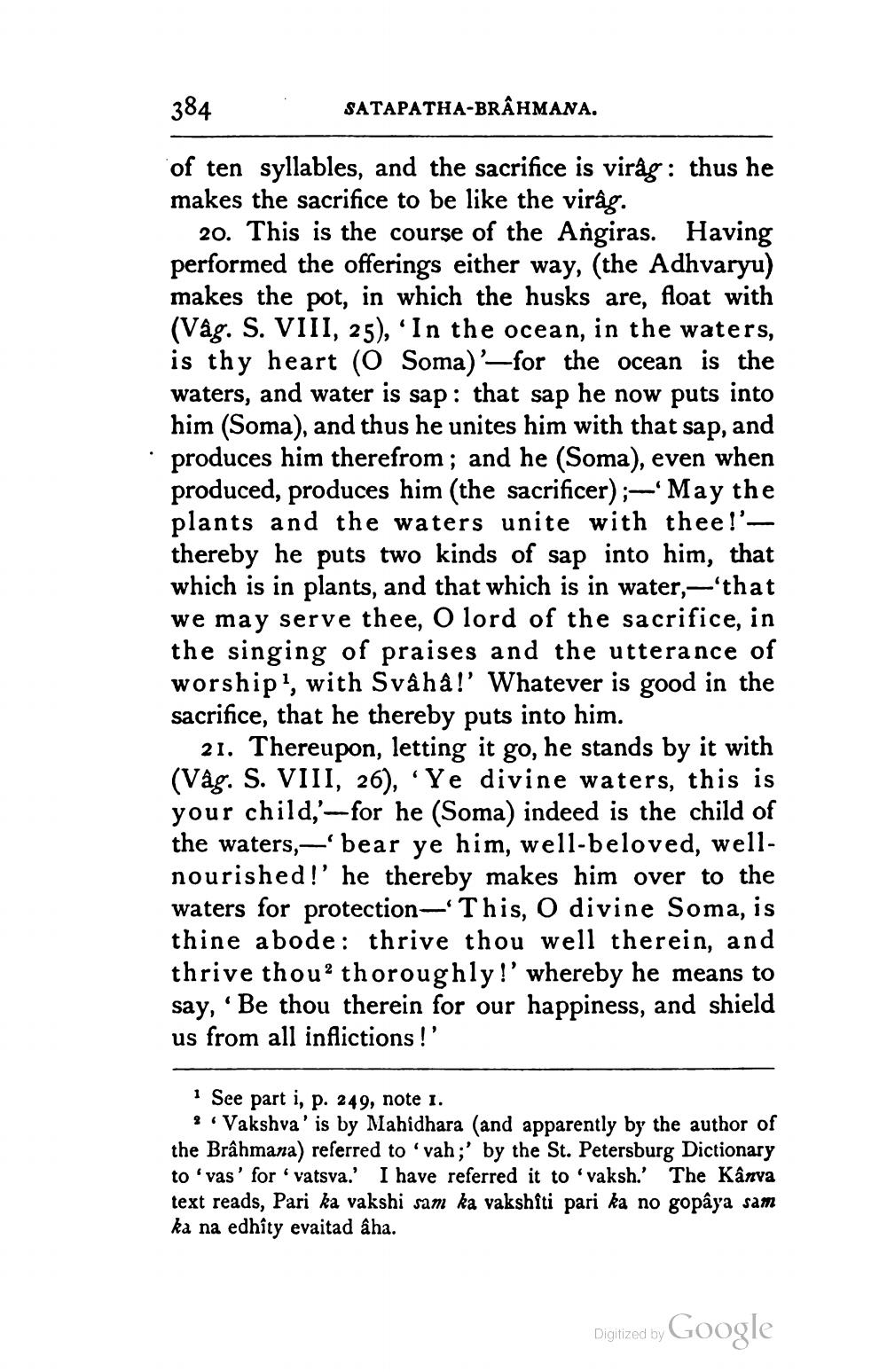________________
384
SATAPATHA-BRÂHMANA.
of ten syllables, and the sacrifice is virág : thus he makes the sacrifice to be like the virag.
20. This is the course of the Angiras. Having performed the offerings either way, (the Adhvaryu) makes the pot, in which the husks are, float with (Våg. S. VIII, 25), 'In the ocean, in the waters, is thy heart (O Soma)'—for the ocean is the waters, and water is sap: that sap he now puts into him (Soma), and thus he unites him with that sap, and produces him therefrom; and he (Soma), even when produced, produces him (the sacrificer);—May the plants and the waters unite with thee!'thereby he puts two kinds of sap into him, that which is in plants, and that which is in water,—'that we may serve thee, O lord of the sacrifice, in the singing of praises and the utterance of worship', with Svâhâ !' Whatever is good in the sacrifice, that he thereby puts into him.
21. Thereupon, letting it go, he stands by it with (Våg. S. VIII, 26), ‘Ye divine waters, this is your child,'--for he (Soma) indeed is the child of the waters,—' bear ye him, well-beloved, wellnourished!'he thereby makes him over to the waters for protection—This, O divine Soma, is thine abode: thrive thou well therein, and thrive thou? thoroughly!' whereby he means to say, 'Be thou therein for our happiness, and shield us from all inflictions!'
· See part i, p. 249, note 1.
. Vakshva' is by Mahidhara (and apparently by the author of the Brâhmana) referred to 'vah;' by the St. Petersburg Dictionary to 'vas' for 'vatsva.' I have referred it to 'vaksh.' The Kanva text reads, Pari ka vakshi sam ka vakshiti pari ka no gopâya sam ka na edhity evaitad âha.
Digitized by Google




